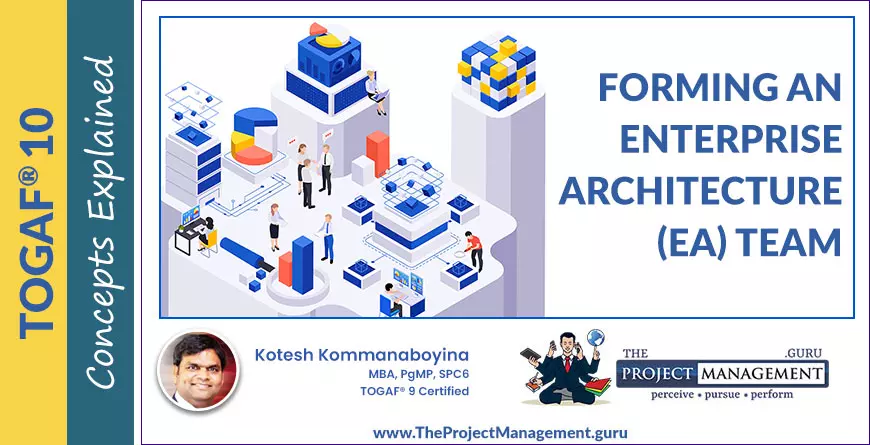
How to Form an Enterprise Architecture Team
This article provides a direction to form an Enterprise Architecture team as per the TOGAF® 10 guidelines.
Contents
An ability of establishing a high-level description of the architectural method to realize a specific solution or aspect.
An Enterprise Architecture Capability is the ability to develop, use, and maintain the architecture of a particular enterprise, and use the architecture to govern change.
Source: TOGAF® 10 Standard
EA Capability Leader play a vital role by overseeing all the related aspects.
EA Capability Leader spearheads the work performed to develop an EA Capability within an organization by aligns to a set of requirements and expectations that are specific to each enterprise adhering to the TOGAF® suggested best practices.
Definition of EA Capability Leader
EA Capability is a managerial aspect of facilitation plans to further improve the ability by enhancing the outcomes enabled by the capability.
Each organization needs to develop it’s own EA Capability rather than following a generic capability to fully realize the benefits for the organization.
EA Capability can be broadly classified into four categories:
The EA Capability must run efficiently, effectively, and inline with changing operational and financial practices.
Organizational structures providing the EA Capability can be viewed in 3 variants:
Let’s look into each of the models in detail.
Enterprise Architecture is part of each of the functional verticals and one of the teams consolidates all Enterprise Architecture activities.
Also, in other type of function-centric organization structures, Enterprise Architecture could be part of the dominant or key function of the enterprise. In this variant, it may be prudent to draw members of the team providing the EA Capability from each of the functional units having extended responsibility for a common goal, from an HR management perspective, and report to respective functional or regional business leaders.
Enterprise Architecture is normally aligned to the IT organization, irrespective of how it is named. The charter for the team may vary depending upon how IT is structured within the organization.
When IT is aligned to the CFO, the charter for the Enterprise Architecture team may be driving operational efficiency and cost control. When IT is aligned to delivery or marketing, the charter is more likely to focus on agility and efficiency.
When selecting members, the EA Capability Leader emphasize on the context and choose members carefully who has process analysis and cost management expertise or a deep functional knowledge of operations.
Enterprise Architecture contributes to sustained growth, operational efficiency, cost reductions, and risk reduction which are key elements of the EA charter through the alignment with corporate strategy, operations and finance units within the organization.
Organizations operating in highly secure environments, such as the governments, military or defense industry, rely…
Weighted Shortest Job First (WSJF) is a prioritization model used to sequence work for maximum…
The US Government agencies are subject to a wide variety of computing standards designed to…
Do not waste your time with explanations. People only hear what they want to hear.…
Who Is A Stakeholder? A party that has an interest in an enterprise or project.…
Project Management discipline is the process & activity of planning, organizing and controlling resources, procedures…
This website uses cookies.